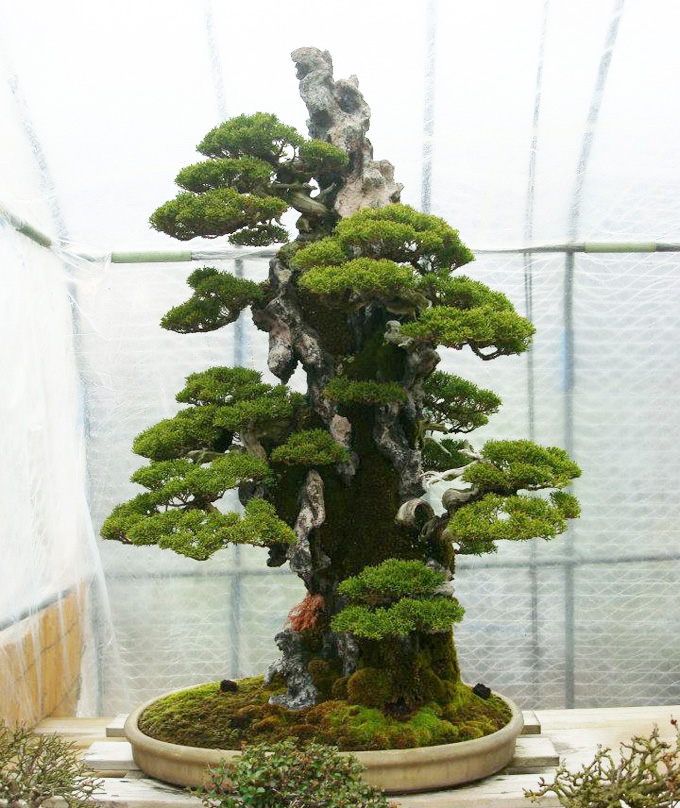 The mature look. It helps to start with well developed trees. I think most of us would be happy to have trees like these Shimpaku as single bonsai, let alone as parts of group plantings.
The mature look. It helps to start with well developed trees. I think most of us would be happy to have trees like these Shimpaku as single bonsai, let alone as parts of group plantings.
Time for another summer rerun. Today I’m embarking on a trip to the other coast, so it seems like a good idea to continue our summer vacation series of resurrected oldies but goodies. This one is from last December.
Kimura’s rock plantings. These photos are all from a facebook posting by Alejandro Sartori that he took during a recent visit to Masahiko Kimura’s nursery. I’ve chosen to pick out some rock plantings from a much larger selection of Alejandro’s photographs of Kimura’s trees. I think they represent an aspect of Kimura’s revolutionary bonsai journey that may not be as familiar as some of his other bonsai, particularly his famous dramatic large bonsai that he sculpted using chainsaws and other power tools.
I believe that the rocks in these photos were constructed by human hands. Quite possibly even by Kimura’s famous hands. There is a chapter in The Magician, the Bonsai Art of Kimura 2 (right now all of our books are 20% to 25% off of our regular discounted prices, so the time is ripe) that shows how to construct a layered vertical rock. The second photo down features one of these.
By the way, all of the plantings shown here are root-on-rock style as opposed to root-over-rock style.
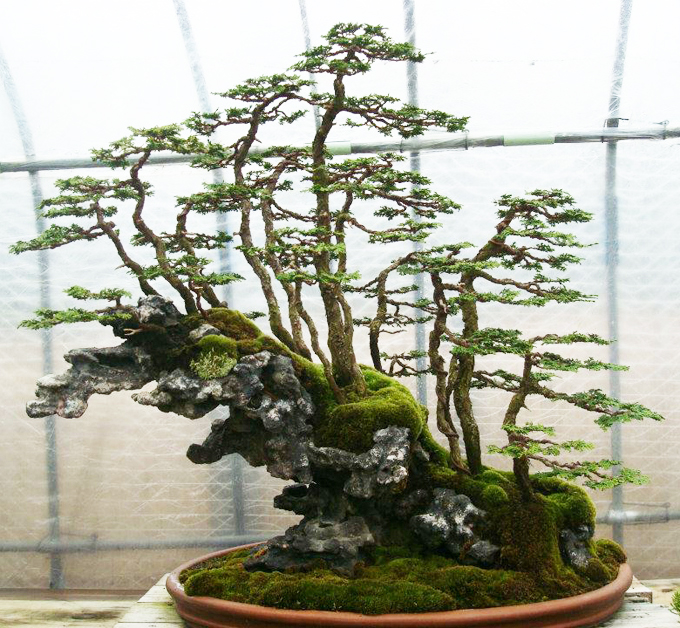 Are these trees Hinokis? It’s hard to tell for sure, but that’s my best guess. It’s also hard to tell the size of this planting without something to contrast it with, though you might imagine that it’s quite large. My guess is that the pot is somewhere around 30 inches (76cm), which would make the planting about 40 inches (100cm) across, but that’s just a guess.
Are these trees Hinokis? It’s hard to tell for sure, but that’s my best guess. It’s also hard to tell the size of this planting without something to contrast it with, though you might imagine that it’s quite large. My guess is that the pot is somewhere around 30 inches (76cm), which would make the planting about 40 inches (100cm) across, but that’s just a guess.
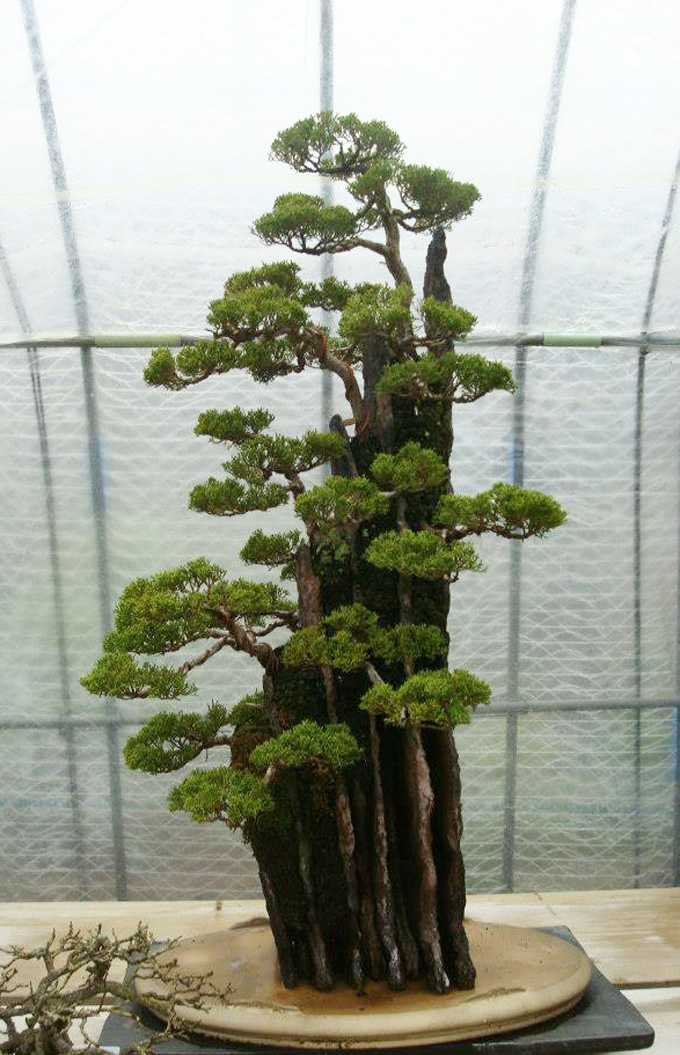 Another Shimpaku planting. The trees aren’t quite as developed in this one, but they’re still pretty good. It’s fairly easy to see that the rock was constructed in layers. There’s an excellent chapter in The Magician, the Bonsai Art of Kimura 2, where he shows how to do this.
Another Shimpaku planting. The trees aren’t quite as developed in this one, but they’re still pretty good. It’s fairly easy to see that the rock was constructed in layers. There’s an excellent chapter in The Magician, the Bonsai Art of Kimura 2, where he shows how to do this.
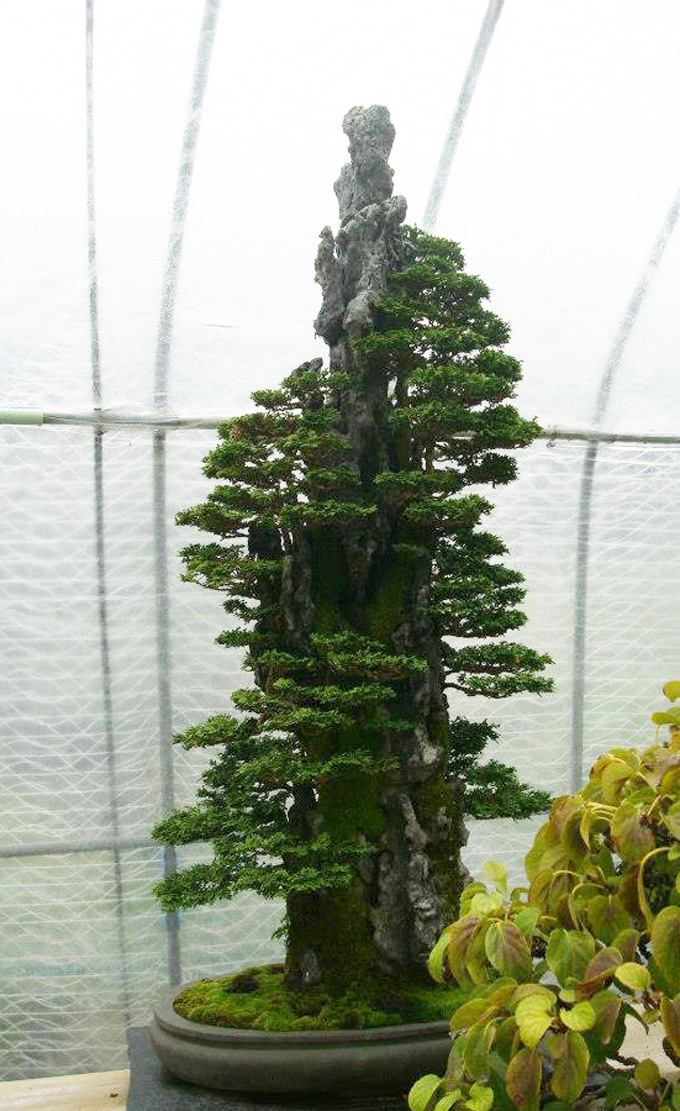 I like the way the trees (Hinokis again?) grow straight up along the side of rock on this one. This serves to help create a dynamic sense of vertical movement (something like that anyway). This is further enhanced by the way the crown of the rock reaches up to the sky.
I like the way the trees (Hinokis again?) grow straight up along the side of rock on this one. This serves to help create a dynamic sense of vertical movement (something like that anyway). This is further enhanced by the way the crown of the rock reaches up to the sky.
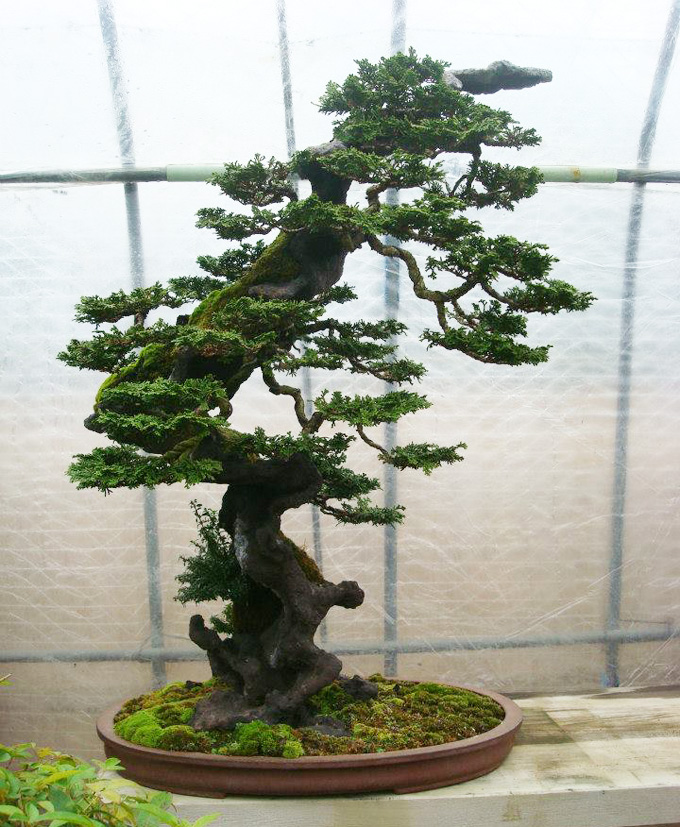 The eccentric. I think this one is the most unusual of the lot. Perhaps a big part of that unusual feel is the distinctive shape of the rock. In contrast to the planting immediately above, these trees (Hinokis again?) create a whole different feel by growing down and away from the rock.
The eccentric. I think this one is the most unusual of the lot. Perhaps a big part of that unusual feel is the distinctive shape of the rock. In contrast to the planting immediately above, these trees (Hinokis again?) create a whole different feel by growing down and away from the rock.
I have seen these plantings in person. Pictures cannot do them justice. The last one reminded me of something from a Dr Seuss story. ( 1-tree-2-tree…?)
Amazing…what I’d like to know is how often these get watered each day…particulary the hinoki, which do not react kindly to have their roots dry out.
HI Jeff,
My guess is the hinoki plantings are kept in shade or semi-shade which would help keep watering requirements somewhat manageable. Shimpaku on the other hand do best in full or near-full sun, so you might imagine that on hot sunny days two or even three waterings might be in order.